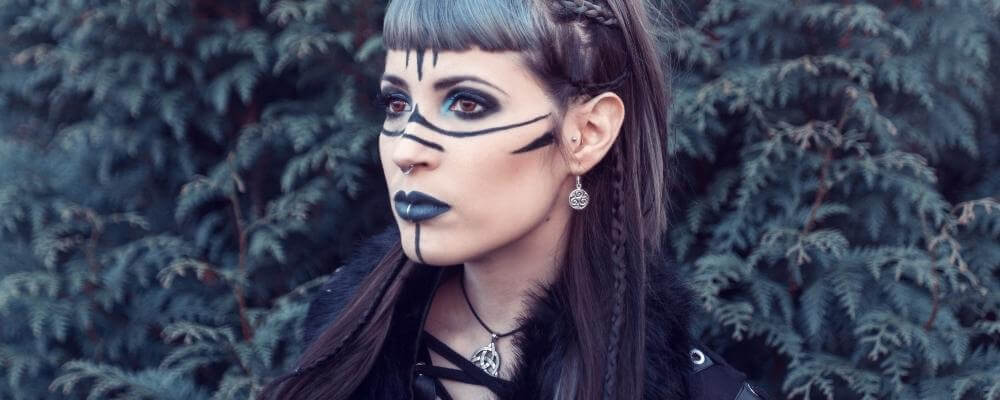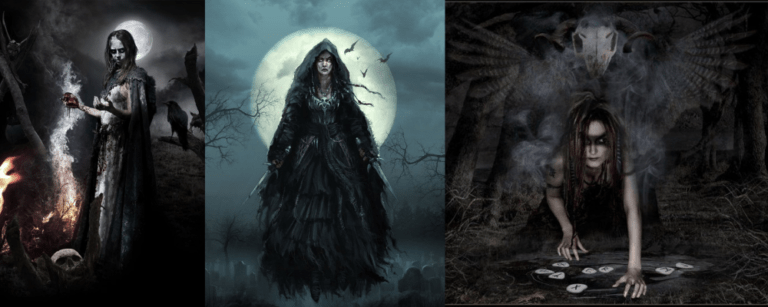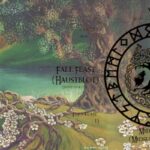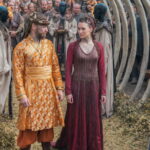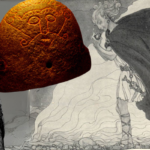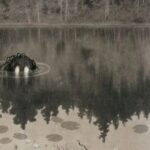In most ancient cultures we encounter ideas of magic, witchcraft, and shamanism.
Norse society is no different. The Viking witch was known as a Völva, and they were considered to be powerful seeresses, shamans as well as workers of Seidr magic.
Read on to find out more about these Viking witches, the powers these Volva are believed to have possessed, and the role of the Volva shamans in Viking society.
Viking Witches
Among the Vikings were women called Volva, or more accurately Völva, which means “wand-wed” or “staff-carrier” in Old Norse.
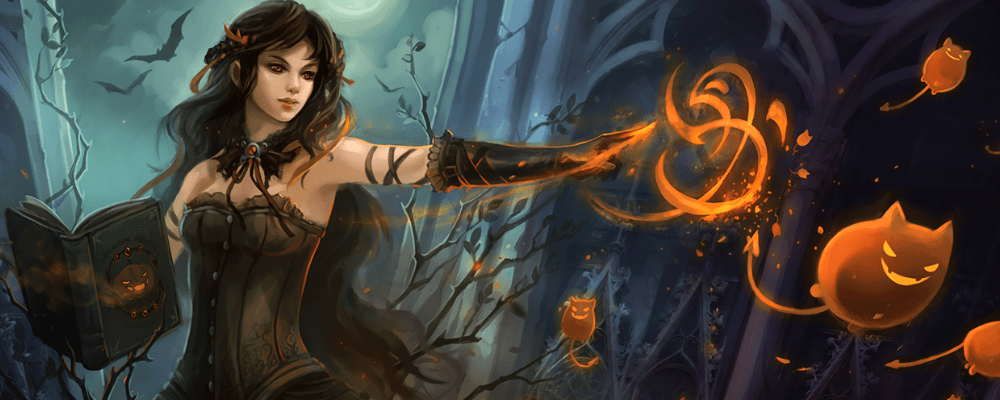
This staff was an essential attribute of the Volva, who were considered to be seeresses, shamans, and practitioners of Seidr magic.
In the sagas and stories, the Volva are often described as old Viking witches that would wander from town to town or farm to farm, delivering prophecies and performing magic in exchange for shelter, food, and other forms of compensation.
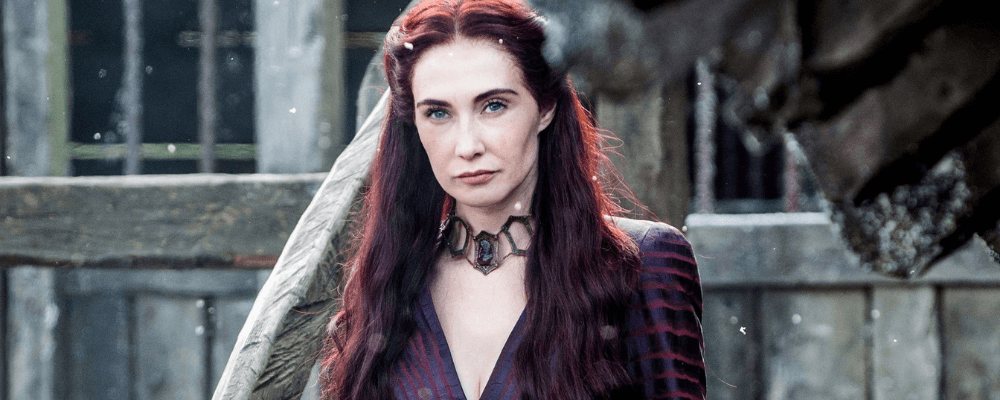
Despite their role outside of the normal structure of society, the Volva seem to have been treated with great respect in Viking society. Visiting Volva were given pride of place at the dining table and were free to speak to or ignore whom they pleased, regardless of social rank.
There were male seers and practitioners of Seidr magic, but in general, these were considered feminine arts. Male practice was largely considered taboo. Even Odin, a practitioner of Seidr magic, was criticized by Loki for being unmanly as a result.
Powers of the Volva
The power of the Volva appears to have stemmed from the practice of Seidr magic. This type of Viking witchcraft was linked with ideas of fate and enabled the user not only to read fate and tell prophecies but also in some cases to manipulate it.
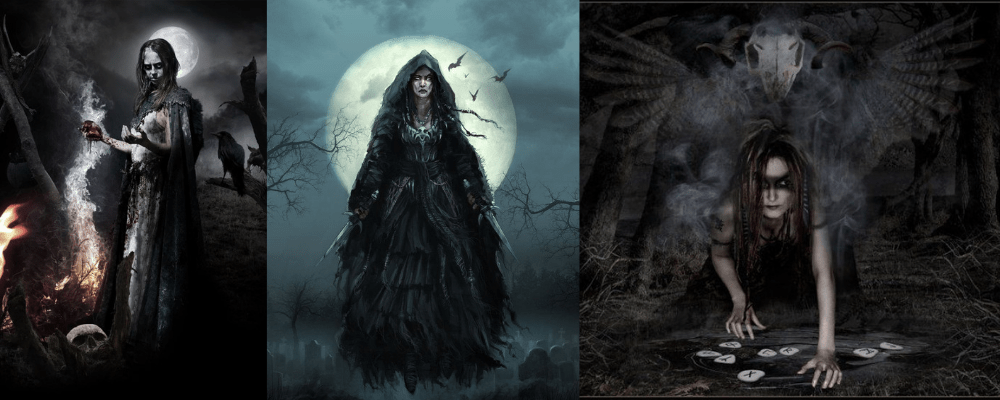
Thus, first and foremost, the Volva were seeresses and tellers of prophecies. Seeing the future often required a shamanic ritual that involved a group of young girls singing a spirit invocation while the Viking witch entered a trance that allowed her to commune with the spirits and the gods.
As the incantation came to an end, the seeress was caught between two worlds, and at this point in the ritual, the Volva could predict the future and provide prophecies to those nearby.
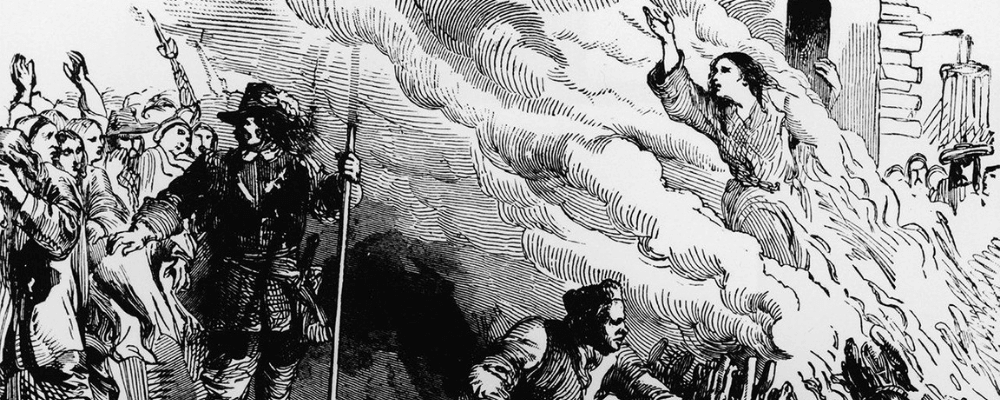
But this was not the limit of the Viking witch’s power. The magic of Seidr, which means “to bind” in old Norse, also allowed the Volva to do things such as raise storms, cast love spells, and send nightmares to kill someone in their sleep. The Volva were also believed to be able to take on animal form, probably using this shamanic power to fight or to travel long distances.
The Volva also appear to have had powers of healing. According to one story, when Thor is injured while traveling through Jotunheim, the Volva Groa attempts to use her witchcraft to heal the deity. The Volva were probably also considered healing shamans among the Vikings.
Volva Attributes
It is likely that a 9th-century burial found near the ring fortress of Fyrkat in Öland was the burial of a Volva. It was a rich burial, with the woman placed in a horse-drawn carriage, indicating that she was a person of importance. It also contained an 82 cm long iron staff with bronze details. Possibly a Volva shaman’s Seidr staff.
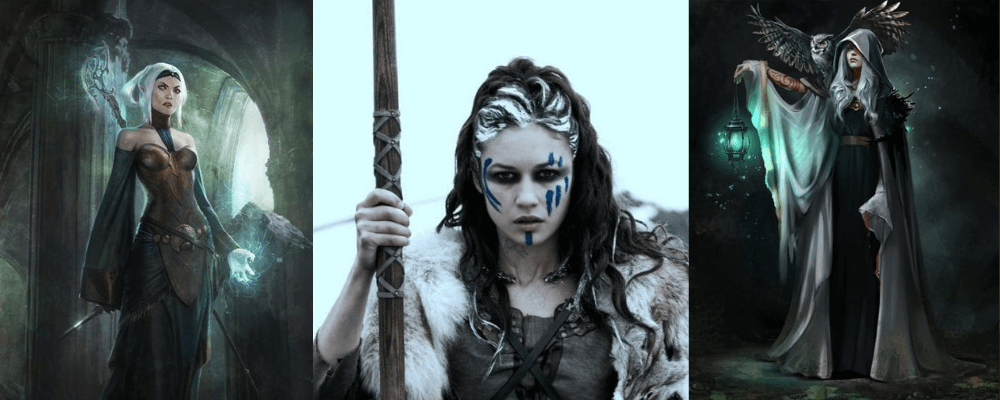
The Viking witch was finely dressed in a blue and red dress and headscarf with golden thread along its edge. It is thought that both female and male Volva shamans would have used these bright colored dresses.
The buried Volva also wore numerous toe rings, many made from silver, which is very unusual among the Vikings, so is a sign of both wealth and difference within Viking society.
Alongside her Volva staff, she was buried with a variety of other items that might have been tools of her trade. The Volva had a silver brooch plated in gold that contained white lead powder, a toxic substance that may have been used in rituals.
She also had a small purse containing poisonous henbane seeds. When rubbed onto the skin as a slave these can cause hallucinations. The Volva was also found with bowls and animal bones, all of which may have been used in the practice of witchcraft.

Origins of the Volva
According to Norse legend, the Volva that lived in Midgard during the Viking age probably learned their art from the goddess Freya. This goddess of love and beauty was not one of the Aesir gods, but from the other race of Norse gods, the Vanir.
While the Aesir gods were powerful in a warlike way, it seems that the Vanir gods had a softer, more esoteric power, and were masters of Seidr magic.
The Aesir and Vanir gods warred for many years, but eventually came to a truce agreement that involved the exchange of hostages. Freya was one of the Vanir gods sent to live among the Aesir.
There, she taught the art of Seidr magic to the Aesir gods, and to the men, or should we say women, of Midgard, creating the Volva.
Of the Aesir gods, it was Odin who became the master of Seidr magic. His interest in the practice, despite its feminine associations, seems unsurprising since he was famously thirsty for all knowledge, and would pay any price to acquire it.
The Norns, the Norse fates, are also commonly associated with Volva magic. The three Norns that live at the base of Yggdrasil, the tree of life, may have been Vanir goddesses well versed in Seidr magic. There are also references to other less powerful Norns. Perhaps this was another way of referring to powerful Volva witches.
The Voluspa
The Voluspa poem, the title of which means “Prophecies of the Völva” was probably composed by an Icelandic author in the 10th century, and then added to over the centuries. The versions that come down to us today only survive from the 13th and 14th centuries and reflect significant Christianising influences.
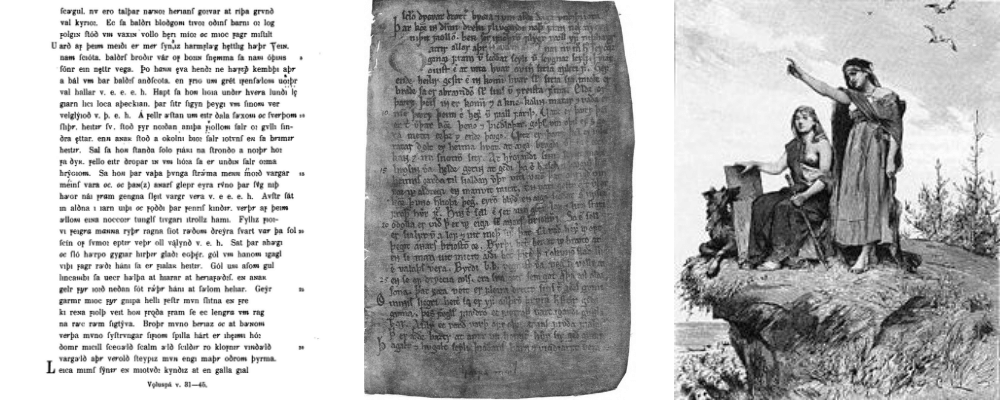
According to the poem, Odin uses his powers to summon a Volva from the dead to share her wisdom with the gods.
This particularly ancient Volva then recounts the entire history of the Norse cosmos from creation, and gives prophecies of the inevitable destruction of the world at Ragnarok.
This was not the only Volva to be called forth from the dead. According to one story, the Volva Groa was summoned from the dead by her son to help him accomplish an impossible task set for him by his grandmother.
If this story of Odin consulting the Volva seeress comes from original Viking age myths, it shows an enormous level of respect for the Volva within the culture. If it is a later literary trope used as a vehicle to relay the story of Norse creation and apocalypse, the fact that it was an appropriate vehicle also reflects the respect within Norse culture for these female shamans.
Persecution
At the end of the Viking age, the rise of Christianity saw the persecution of the Volva as dangerous magic practitioners and staff bearers of the old religion. In fact, the use of the types of staff that the Volva carried was strictly outlawed.
It is interesting to note how different attitudes of the Norsemen and Christians to witchcraft, magic and seeresses. Viking witches were honored and respected, while under Christianity, witches and magic workers were persecuted.
